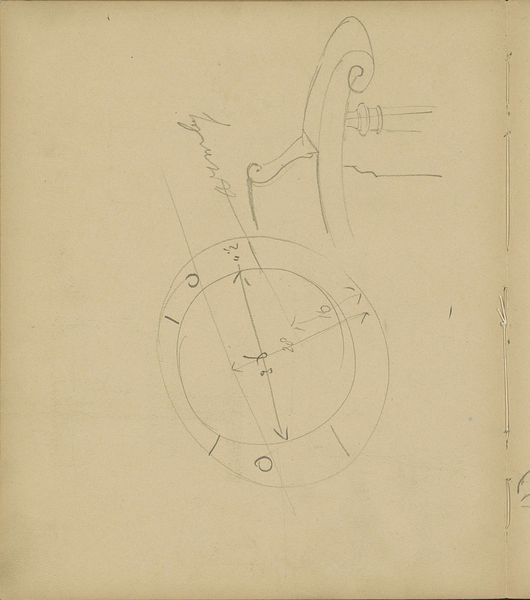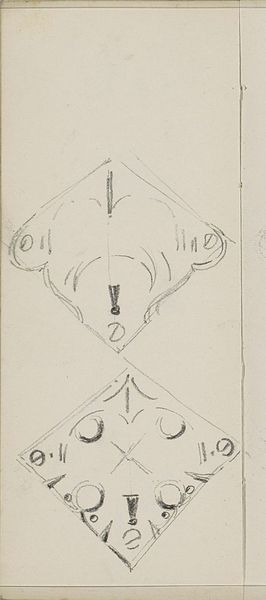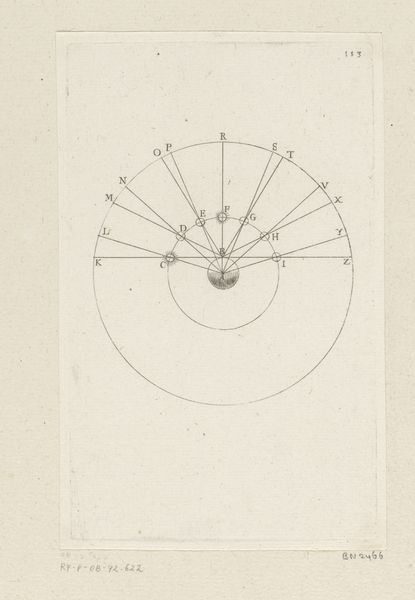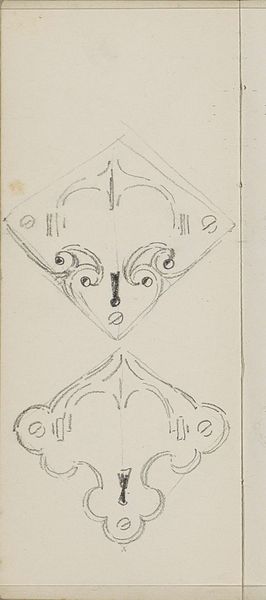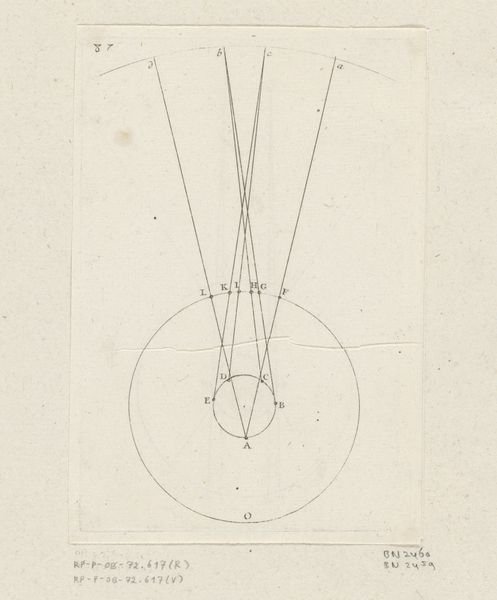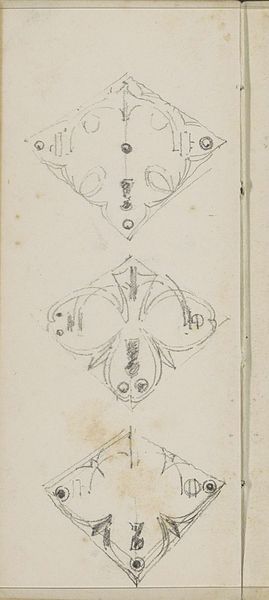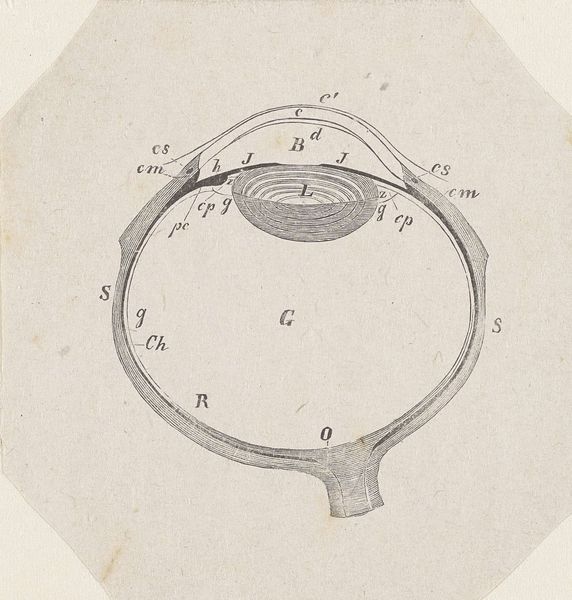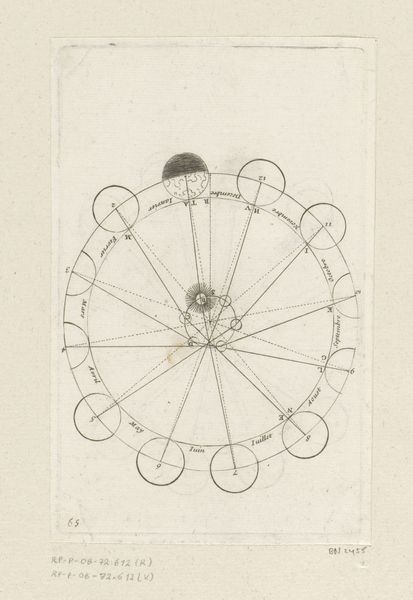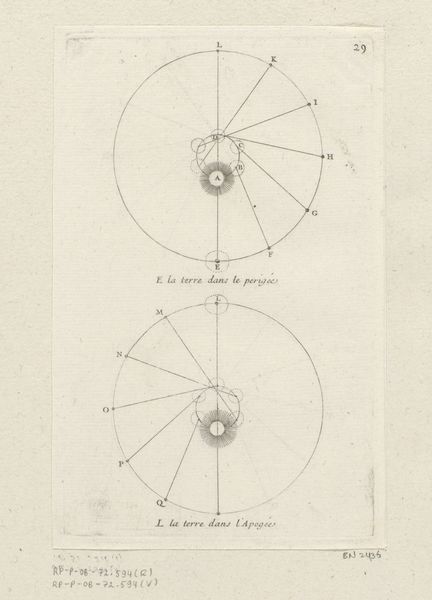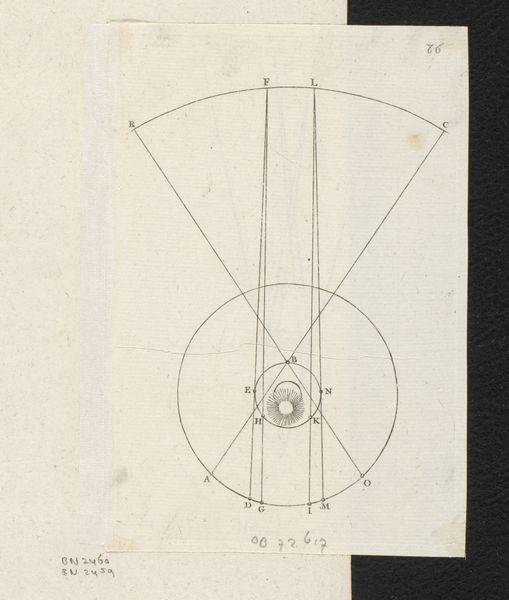
drawing, pencil
#
drawing
#
light pencil work
#
art-nouveau
#
quirky sketch
#
personal sketchbook
#
idea generation sketch
#
sketchwork
#
ink drawing experimentation
#
geometric
#
pen-ink sketch
#
pencil
#
sketchbook drawing
#
storyboard and sketchbook work
#
sketchbook art
Copyright: Rijks Museum: Open Domain
Curator: Welcome. Here we have Gerrit Willem Dijsselhof’s drawing titled, “Rhomboid Shape and Floral Ornament”. It likely dates from between 1876 and 1924. Editor: My first impression is one of tentative exploration. It’s very delicate. It almost feels like spying on the artist’s creative process. Curator: Indeed, there's an intimacy to it. Dijsselhof, known for his work during the Dutch Art Nouveau movement, often explored the relationship between nature and design. The work you see here showcases a looser, more preparatory style compared to some of his more finished pieces. Editor: Right, the symmetry is compelling, but it’s not perfect symmetry. Look at those circles and dashes within the rhomboid. There’s a tension between control and free expression that makes it intriguing. I think it reveals something about how art nouveau artists sought to democratize and make fine arts accessible through design and patterns. Curator: Absolutely. Designs like this could potentially be applied to furniture, textiles, or even architectural details. Dijsselhof and his contemporaries aimed to elevate everyday life through aesthetically pleasing objects. This work resonates within a specific social desire for beauty amidst industrialization. Editor: This period had interesting contradictions. There was a need for beauty. However, one might see this ornamental style and relate it to colonial power structures, appropriating cultural motifs to present a romanticized vision of power. Curator: It's interesting you point that out because it encourages us to ask questions about what and who this beauty really serves. What specific visual elements are romanticized? Why and for whom? Editor: This small unassuming sketch becomes a powerful catalyst for examining broader narratives and dialogues around power, class, and historical representation. I’m grateful for that complexity. Curator: Likewise, considering it as a reflection of broader artistic and social movements invites deeper examination of its impact and context. Editor: It highlights the relationship between visual art and life, doesn’t it? This small drawing provides a rich foundation to consider our relationship with design today.
Comments
No comments
Be the first to comment and join the conversation on the ultimate creative platform.

